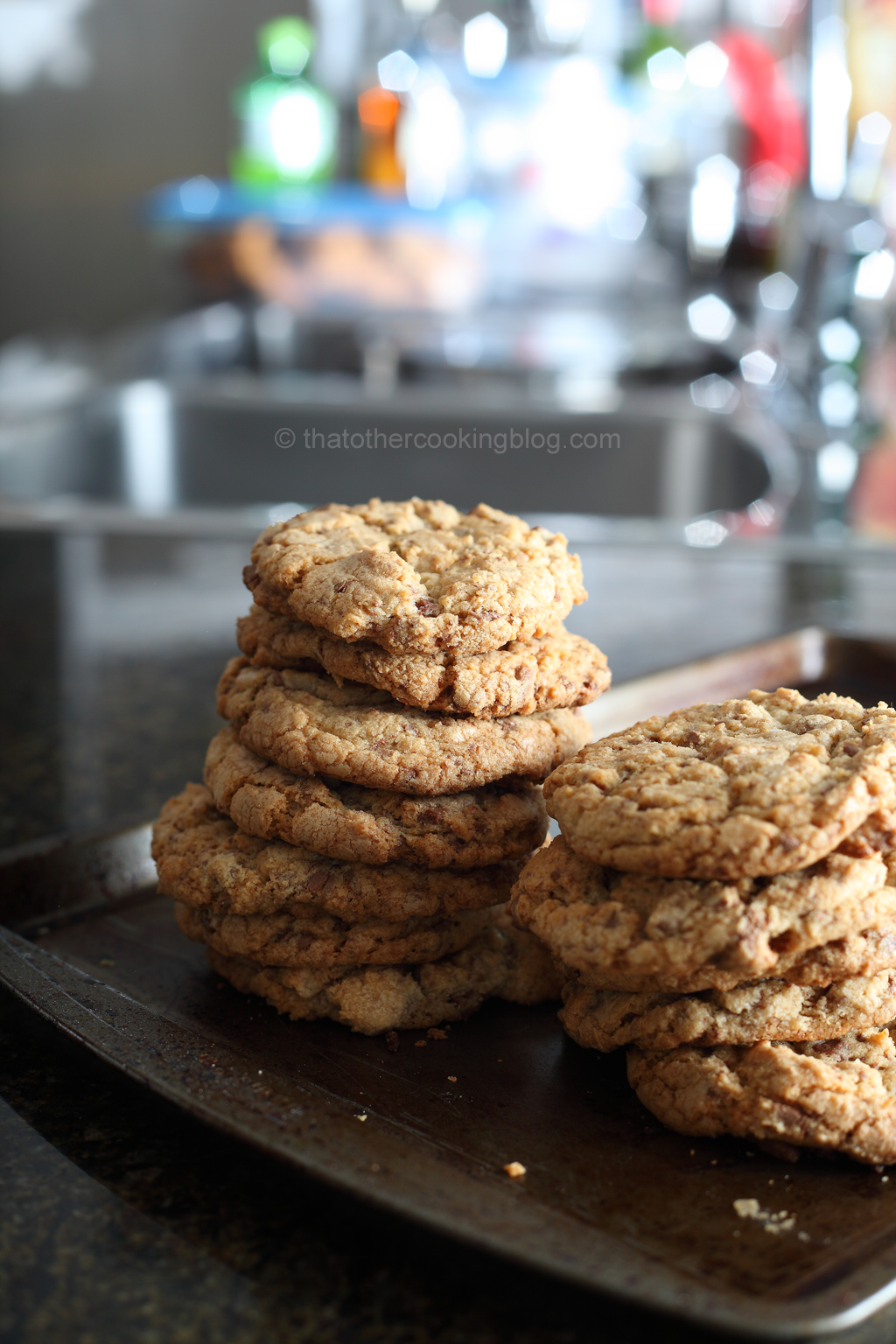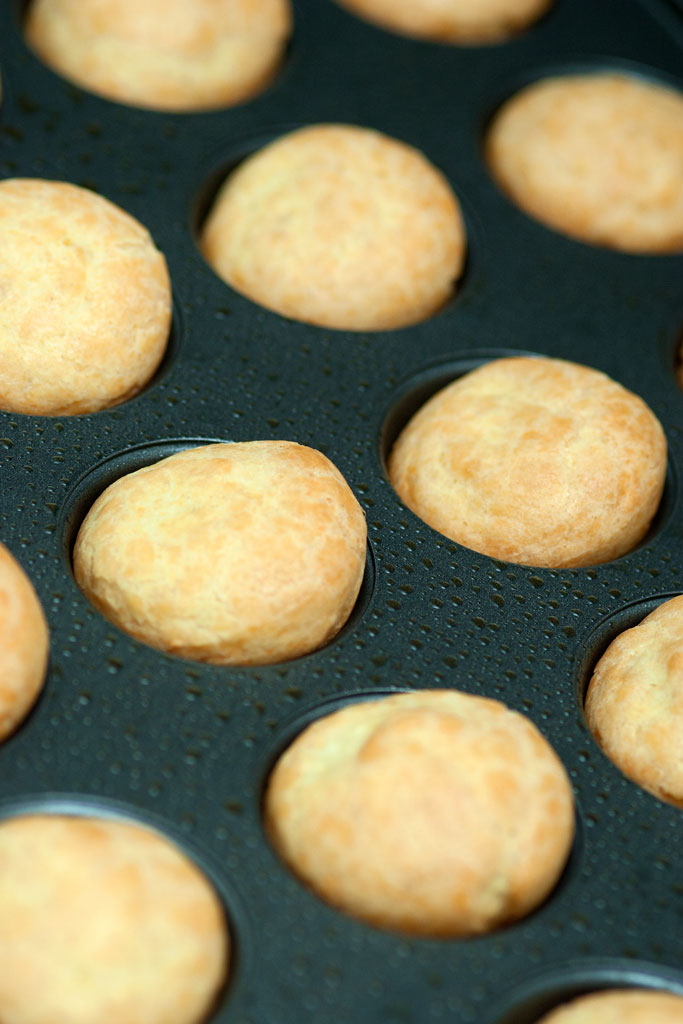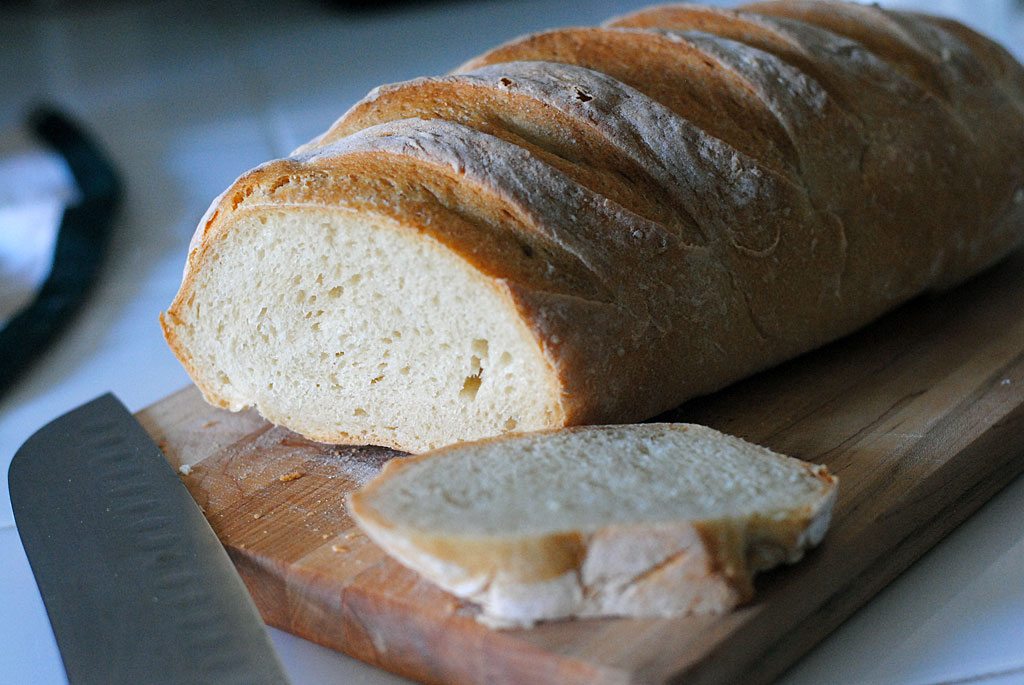Fall is pretty much upon us and the start of a new cooking season begins. One that I personally find exciting and more fun. Not that I have anything against summer cooking, but enough with the salads already! 🙂 Today’s post is about brioche, this combination of flour, butter, eggs and yeast. Its delicate texture and richness sets this bread apart. Can bread be sexy? I’ll have to say yes it can. A wonderful breakfast, bread, delicious hamburger buns, makes awesome croutons, bread pudding, the list goes on. This bread, although not difficult to make, it does require a bit of patience and paying attention to a few things but enough blah bah, let’s get into it! Here I give you the most comforting bread in the world: Honey Glazed Yogurt Brioche.

I’d like to point out a few things I’ve learned that might help you when making brioche, some of these pointers actually apply to any kind of bread baking really:
Number one rule of making a brioche: Don’t cut corners, specially not the fat content corner. Brioches require fat to be soft and fluffy. That’s just the way it works! Anyone looking for substitutions, and how to make a “light” brioche, I’m sure there are options out there, not here though. The flour to fat ratio from recipe to recipe changes, with some brioche recipes using 1 parts butter 2 parts flour. This recipe has a little less fat.
Use a stand mixer possible. Of course it can be made by hand but it is hard work! I like to develop enough gluten so that the brioche is chewy and stretchy and that takes time, between 20 to 40 minutes of mixing with my stand mixer. It is gluten that gives this bread structure and traps those gas bubbles released by the yeast. This bread rises wonderfully. Some recipes call for shorter mixing times, which yields a more crumbly yet a bit denser bread. Still pretty good, but not my favorite. Like most things in the cooking world I guess, make it the way you like it.
The windowpane test is a good way to find out if your dough has developed enough gluten. Basically, take a small dollop of dough, and stretch it between your thumbs and index finger. The stretched dough should not rip, and should be translucent when held against a light source, like a window or a lamp. In time, by looking at it in the stand mixer you can see how the strands of dough, stretch longer and longer without tearing, looking more like tendrils if you will. That’s good developed gluten.
For a delicate crust, one that is thin and golden and moist, control the humidity in your oven. I keep a spray bottle with water near my oven when I bake. Sometimes I have a baking tray in the oven, and i pour water on it. The humidity will delay the crust from forming too early and keeping it from drying out and becoming tough. A crust that forms too early can also prevent the bread from rising to its full potential. Don’t over hydrate either. You still want the crust to form and acquire that nice golden color. Some practice here will help. It took me a few breads until I started getting the crust that I was happy with.
Improve your oven spring by adding clay bricks or rocks at bottom (yeah, Im not joking). Some people even add chains (still not joking). There’s always the popular pizza stone, but mine broke a long time ago. You can use a steel tray if you can find one, those work wonderful too. I have a black floor tile in there as well in mine. And on top of all of this, I baked this brioche in a cast iron dutch oven. Anything that can help your oven stay hot helps.
Last but not least. Use a digital scale if possible. Cooking with cups is perfectly fine, but I find that cooking with a scale not only helps with precise measurements but also cuts dishwashing time. Less stuff to clean, and recipes are easier to reproduce predictably. I used to have this measuring cup which I used for a while when I started baking. It would only hold 200ml and not the standard 236ml and I didn’t know. It explained so much once I found out 🙂

Yogurt Brioche:
500g bread flour + ~50g (I add extra flour until dough feels good)
80g sugar
160g yogurt full fat (I used greek)
160g lukewarm water in separate bowl
2 whole eggs
50g softened unsalted butter (room temp)
3g kosher salt
7g yeast (I used 1 packet of highly active yeast)
Honey Glaze:
1 Tbsp honey
2 tsp water
Method:
1. Add the sugar to the water, add the yeast, stir well, and let sit still until it foams. Usually takes about 5 minutes, maybe longer. It doesn’t matter. Just make sure the yeast is alive and happy.
2. Meanwhile. Add the flour, sugar, salt, to the stand mixer bowl and sift for about a minute.
3. Add the water+yeast solution to the stand mixer bowl. Let the flour soak up the water. You can mix for a minute or two. Let rest for about 10 minutes.
4. Add the eggs. Mix (slow speed) until incorporated. About 10 minutes.
5. Add the yogurt and the butter. Mix (slow speed) until ready. About 20-30 minutes. Be very patient and do not panic. In the beginning, the contents of the bowl will look more like a disaster, but over time, the fat gets incorporated into the dough, the gluten develops, slowly because of the presence of fat, but still develops. Eventually, the dough will come together, you might need to add extra flour, tsp by tsp until the dough is just right. It should slap the walls of the bowl and cling firmly to the dough hook.
6. Stop the mixer. Form the dough into a ball and place in a buttered bowl. Cover loosely with cling wrap.
7. First rise. One hour or until double in size.
8. Remove dough from bowl. On a floured surface, push the air out. Knead into a ball. Place it back in the bowl. Cover loosely with cling wrap.
9. Second rise. One hour or until double in size.
10. Remove dough from bowl. On a floured surface, push the air out. Knead into a cylinder.
11. Cut the cylinder into 5 or 6 sections and shape them into balls.
12. Butter and flour the interior of a large dutch oven. Place the balls inside, single layer.
13. In a preheated oven at 375F bake until done. About 20-25 minutes. Remember to preheat your oven at least an hour before baking. Spray water over the bread a few times during baking.
14. Paint the top of the rolls with the honey glaze and finish baking. Another 10-15 minutes. I lowered the temperature to 260F. The crust and rise will very likely look beautiful. at this point It just needs the interior to set. Remember, bread is really starches that need to gel and set. The interior temperature of bread is always going to be below the boiling point of water. If its higher, that means that the interior ran out of water and that that bread is about to become charcoal 🙂 Make your way to your nearest smoke detector, is about to go off.
15. The internal temperature of the bread should be about 90C or 194F. That’s the best way to know your bread is done. With a thermometer.
16. Take bread out of the oven. It can be left in dutch oven, until it cools down. About an hour. Needles to say, that dutch oven is extremely hot, always use dry kitchen towels or oven mittens.

Related posts:
Brioche Rolls : Yogurt : Nutella : oh so good!
Microwave Brioche : Gas Expansion and Starch Gelatinization : The basic idea behind bread
Christmas Brioche (Pan de Jamon Variant)
Trenzas de Brioche
It has been a long time since I wrote the method section for a recipe. It is a lot easier to type that section when the recipe in question is a baked good. Cooking is less about precision and more about constant adjustments of temperatures, and seasoning, and humidity and this and that… very hard to express through a list of instructions and I find it very frustrating sometimes so I rather sort of tell the story of how I made something rather than type some instructions, where baking lends itself better to a logical step by step approach, which doesn’t mean it is a mechanical exercise. Takes practice and it also takes understanding to certain extent the chemical and physical forces at work. My oven has seen many abominations and disasters, but fewer lately thank God. Ok, gotta go! Embrace the new season, and I hope you enjoyed this post! Until the next one!

Wanna get more sous-vide cooking guides and cool cooking how-to’s in your mailbox? You know what needs to be done!
We never spam. You should only be getting updates when new content is posted on the site. We also respect your privacy. We don’t share your email address with anyone and you can unsubscribe anytime!





28 comments
YUM!!!!!!!!!!!!!!!!
I’m speechless. All I can say is BEAUTIFUL.
you’re always too nice 🙂 thank you so much!!!
Love brioche … especially toasted spread with goose liver! Like the thought of honey glazed. *smile Wish you a pleasant sunday.
thanks Viveka! it’s been a while! hope you’re well 🙂
Yes, fine now … just back from a trip to NYC. Had some problems with my butt, but it decided to stay at home for the trip. *smile … haven”t been able to sit for nearly 8 weeks.
I’m sorry, that sucks. Hope you recover soon!
I hope I have recoved .. now, no problems anymore. Wasn’t able to do a lot of blogging during those weeks.
these are beautiful – and brioche is such an indulgent treat. could do with some right now!
thanks Sonya! it is a treat indeed! and seriously, not all that hard to make. Some of my firsts posts on this blog are about failed attempts at making bread and brioche! oh, and cakes, Im the worst at making cakes, ah the good old days 🙂
I was craving for a big loaf of freshly baked bread then I saw this!!! Awesome post, awesome pics, awesome recipe, everything awesome as always ^^ yum yum!
Great to hear from you!! 🙂 thank you so much, so glad you liked it. I tried opening your last post this morning and there was some problem with the URL, not sure if it was just on my end
I checked & everything was okay. My guess is your web browser playing some trick against me ><
That’s a bloody clever way to do the brioche. Infinitely less fuss.
thanks Janet!!!
I love brioche and agree that you can’t cut out too much of the fat. I’ve made brioche dough before, but not one with yogurt! Your brioche came out so beautiful. Bookmarking this recipe–thanks for sharing!
thank you Ada! I hope you like this version of brioche 🙂 Cutting fat in baking and pastry is a difficult thing to pull off. I usually stick to the proper fat ratios and try to eat less…. “try” is the key word here 🙂
Love how you did this in a cast iron skillet rather than a brioche pan, and I totally agree with your rule # 1 of making brioches. Also, I applaud your liberal use of the “G” word, in a positive way.
thank you Susan!!! 🙂
That is absolutely gorgeous! I am definitely going to try this. One day.
thank you swisspris! 🙂 I just came back from your blog, I’m hungry!
You’re killing me…. looks so good.
appreciated! this is a great bread to make. So delicious!
Very fine indeed, hot homemade buns. A nice homemade jam to go with this and life’s problem would appear so small.
that’s a beautiful way to put it! thank you! 🙂
Aaaahhhh! I just made this and it is spectacular! I halved the sugar and used 4 egg yolks and one white (I just had to get rid of some yolks), and nonfat yogurt (probably the yolks helped offset this lack of fat). Did 3 rises, braided it like a Challah before the 3rd rise and cooked it in the dutch oven. It rose to be huge! Next time I will add more salt and a little more sugar, and finish cooking with the lid off. Thank you for this recipe, I have never been proud of any bread I have made before this one. I feel cured of my curse.
Hi Stephy Rae! Sorry it took me so long to get back to you, I was away on vacation 🙂 You have no idea how excited I got when I read this, It always feels amazing when one of the recipes on my blog gets tested and I get a wonderful comment back like yours so thank you! Keep in mind that when adding more salt or more sugar will slow down the yeast fermenting process, so it might take longer to get the same effect, and if the salt and sugar levels get to high the yeast might even die, so be careful which I’m sure you will. I have a tendency of stating the obvious hahaha, sorry!!!! 🙂 So excited your brioche experience went so well! I remember when this happen to me too!
reconnecting thoughts